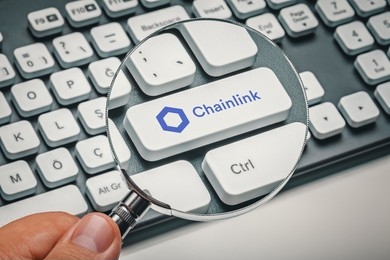Decentralized oracle project Chainlink has recently incorporated Circle’s cross-chain transfer protocol (CCTP) into its own Chainlink Cross-Chain Interoperability Protocol (CCIP) system. The integration aims to enable the “secure transfer” of Circle’s USDC stablecoin across different blockchains.
Chainlink’s Integration Of CCTP
According to a press release, the integration of CCTP expands the potential use cases for USDC, providing developers building with Chainlink CCIP the ability to leverage the protocol for various cross-chain applications.
The co-founder of Chainlink, Sergey Nazarov, expressed enthusiasm for supporting the adoption of stablecoins in different cross-chain scenarios.
Nazarov highlighted the value of CCIP’s defense-in-depth security infrastructure, which incorporates “multiple layers of decentralization” and “advanced risk management features” to meet essential user requirements. Nazarov concluded:
I’m pleased to see that the defense-in-depth security infrastructure of CCIP, with multiple layers of decentralization, is something highly valued by developers building with USDC. It’s also exciting to see CCIP’s advanced risk management features have such a value-added role to play in how USDC can be sent in a way that complies with various key user requirements.
Interestingly, the CCIP system leverages the Risk Management Network, an independent network responsible for continuously monitoring and verifying cross-chain operations to detect abnormal activities.
Given the history of industry exploits and the significant losses of user funds due to insecure and unreliable cross-chain infrastructure, Chainlink’s level-5 security infrastructure offered by CCIP assumes significant importance, according to the press release.
Overall, the integration signifies a step forward in expanding the capabilities of both Chainlink and Circle within the cross-chain ecosystem. Developers now have enhanced tools to leverage the interoperability of USDC across multiple blockchains.
Circle’s 2023 Stablecoin Report Raises Questions
According to a Ledger Insight report, Circle’s recently published stablecoin report, which emphasizes the growth potential and Circle’s role in facilitating faster and cheaper cross-border payments, has drawn attention due to some notable omissions and concerning statistics regarding the performance of USDC.
One intriguing aspect of the report is the unconventional way information is presented, with statistics about the company at the end. According to Ledger, this arrangement is “puzzling,” particularly considering Circle’s recent initial public offering (IPO) filing and the importance of highlighting positive performance metrics.
Circle openly acknowledges a decline in market capitalization from $45 billion to $25 billion, attributing it to the lack of returns on stablecoins in a high-interest environment.
However, the report fails to mention that USDC lost its peg due to the collapse of Silicon Valley Bank in March 2023, providing an advantage to Tether. The combination of the crypto winter, high interest rates, and the de-peg of USDC largely account for the negative statistics.
While the report provides notable statistics, such as a 59% growth in wallets with a balance of $10 or more in the past year and cumulative transactions exceeding $12 trillion since 2018, a key metric is absent.
According to Ledger Insight, the report does not disclose the dollar transaction volumes for 2023, a crucial measure for a payments firm like Circle.
Comparing figures from the previous year’s report, it is deduced that the payment volume in 2023 dropped from $4.5 trillion in 2022 to $3.4 trillion for the first 11 months of 2023.
Another concerning statistic is the decrease in wallet-to-wallet payments that bypass exchanges or service providers, from 15% to 12%. The report omits the comparative data highlighting this change.
The significant growth in USDC wallets may partly explain this trend. With diminishing trust in exchanges, users may have shifted their balances to self-hosted wallets, potentially inflating the growth figures. Alternatively, the surge in wallets could genuinely reflect new user adoption.
Featured image from Shutterstock, chart from TradingView.com
Credit: Source link






























